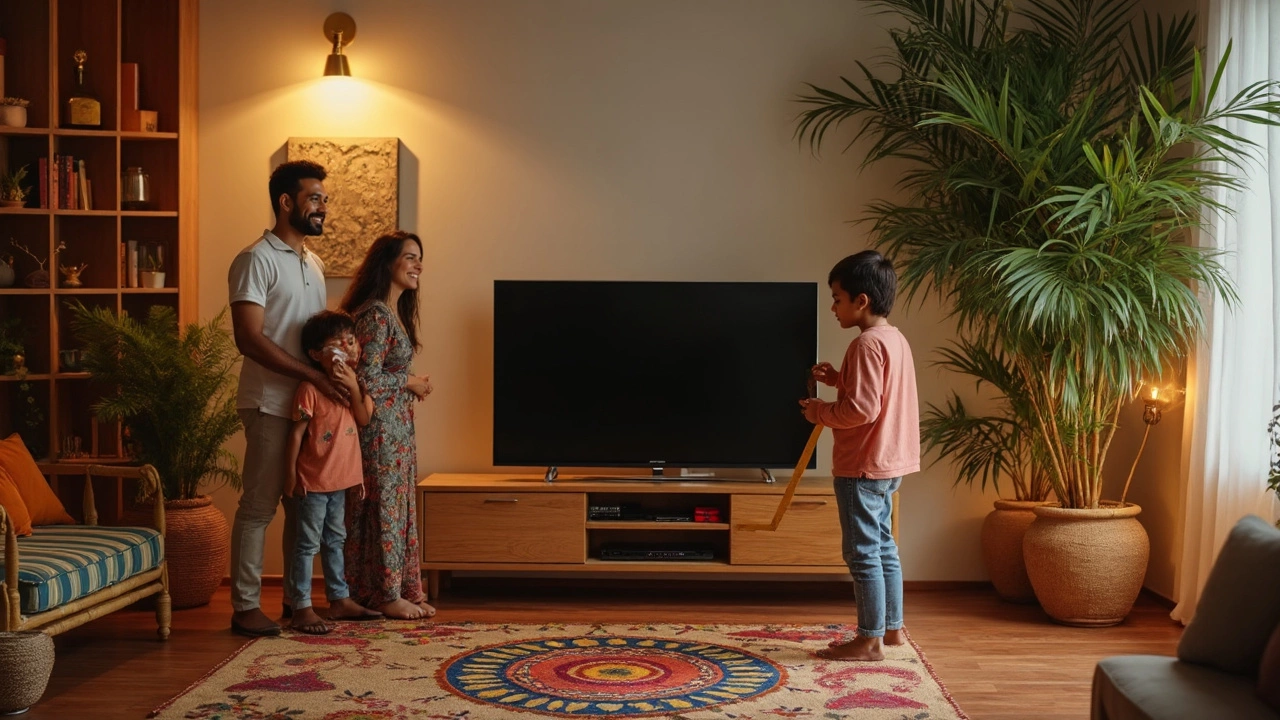TV Furniture: How to Choose, Style, and Make It Work for Your Home
Looking for a TV stand, console, or media cabinet that actually fits your room? You’re not alone. Most people pick a piece based on looks alone, then end up fighting for space, cables, or stability. Let’s skip the guesswork and give you a clear plan that works for any living room, apartment, or basement setup.
How to Pick the Right TV Furniture for Your Space
First thing: measure your TV. Grab a tape measure and write down the width and height of the screen, not the bezel. A 65‑inch TV is roughly 57 inches wide, so you’ll need a stand that’s at least a few inches wider for balance.
Next, think about height. The sweet spot is eye level when you’re seated. Most people sit about 42‑48 inches from the floor, so set your TV stand’s top around that height. If your couch is lower, consider a wall‑mount or an adjustable stand.
Space matters, too. Leave at least 2‑3 inches of clearance on each side of the TV for airflow and easy cleaning. If your room is narrow, a floating console can free up floor space and make the room feel bigger.
Material matters for durability and style. Wood gives a warm look, metal feels modern, and glass can make a small room feel airy. Choose something that matches existing furniture – if you have a dark wood coffee table, a medium‑tone wood console will blend nicely.
Storage is a bonus. Look for shelves or drawers that can hide gaming consoles, cable boxes, and remote controls. Open shelves make it easy to spot wires, while closed cabinets keep the area tidy. Some stands even have built‑in cable management holes – grab those.
Styling Tips to Make Your TV Area Look Great
Now that you have the right piece, let’s make it look good. Start with a simple rule: keep the TV area balanced. If your stand is wide, add a pair of slim side tables or a narrow console on each side to frame the screen.
Play with height variation. A low TV console can be paired with tall plants or a bookshelf behind it to add visual interest. Just make sure nothing blocks the screen.
Color coordination is easy. Pick a base color for your furniture (like gray or walnut) and use accents – cushions, rugs, or art – that pull in one or two shades from that base. This creates a cohesive look without being boring.
Don’t forget lighting. A floor lamp or wall sconces on either side of the TV reduce glare and add warmth. If you have a media console with glass doors, an LED strip behind it can give a subtle backlight that looks sleek.
Finally, manage the cables. Use zip ties or a cable sleeve to bundle power and HDMI cords. Hide the bundle behind the stand or run it along the wall with a cord cover. A clean cable look makes the whole setup feel high‑end.
With these steps, you’ll pick a TV furniture piece that fits, looks good, and stays functional for years. No more awkward gaps, no more tangled cords, just a living space that feels put together. Ready to upgrade? Start measuring, pick a style you love, and follow the simple tips above. Your TV area will thank you.
How Big Should My TV Stand Be for a 55 Inch TV? The Sizing Guide You Actually Need
Wondering what size TV stand you need for a 55 inch TV? This guide cuts through the confusion with clear measurements, real-life layout tips, and practical shopping advice. We’ll talk safety, style, and everything in between, all tailored for the way people actually set up their living rooms. Whether you’re short on space or just want things to look tidy, you’ll find answers here that make sense. No math degree required.





